Pacific Sand Perch, Diplectrum pacificum
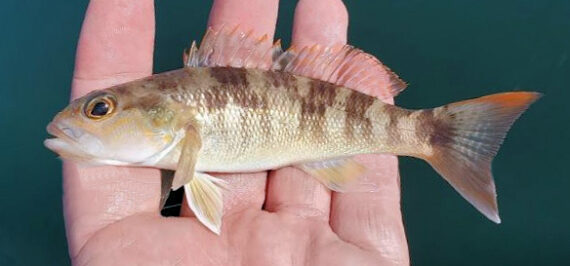 Pacific Sand Perch, Diplectrum pacificum, Juvenile. Fish caught within the Old Harbor, Puerto Peñasco, Sonora, November 2020. Length: 13 cm (5.1 inches). Catch, photograph and identification courtesy of Chris Moore, Peoria, Arizona.
Pacific Sand Perch, Diplectrum pacificum, Juvenile. Fish caught within the Old Harbor, Puerto Peñasco, Sonora, November 2020. Length: 13 cm (5.1 inches). Catch, photograph and identification courtesy of Chris Moore, Peoria, Arizona.
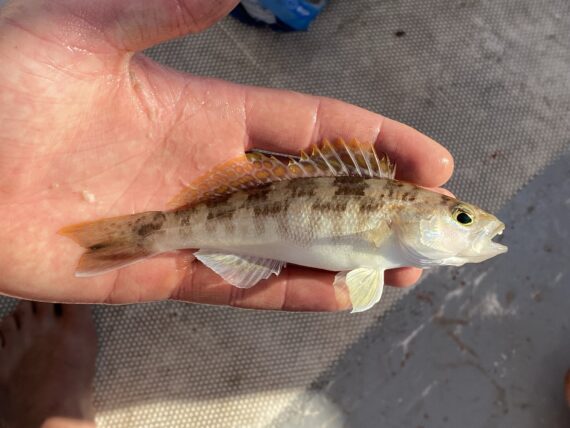 Pacific Sand Perch, Diplectrum pacificum, Juvenile. Fish caught within the Old Harbor, Puerto Peñasco, Sonora, November 2020. Length: 17 cm (6.7 inches). Catch, photograph and identification courtesy of Luke Ovgard, Klamath Falls, Oregon.
Pacific Sand Perch, Diplectrum pacificum, Juvenile. Fish caught within the Old Harbor, Puerto Peñasco, Sonora, November 2020. Length: 17 cm (6.7 inches). Catch, photograph and identification courtesy of Luke Ovgard, Klamath Falls, Oregon.
 Pacific Sand Perch, Diplectrum pacificum, Juvenile. Fish caught from coastal waters within Magdalena Bay, Baja California Sur, May 2018. Length: 17 cm (6.7 inches).
Pacific Sand Perch, Diplectrum pacificum, Juvenile. Fish caught from coastal waters within Magdalena Bay, Baja California Sur, May 2018. Length: 17 cm (6.7 inches).
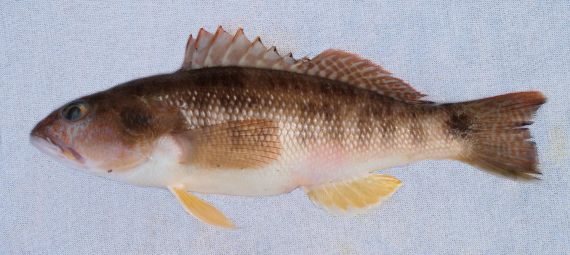 Pacific Sand Perch, Diplectrum pacificum. Fish caught from coastal waters off Puerto Los Cabos, Baja California Sur, April 2003. Length: 18 cm (7.0 inches). Fish identification courtesy of H.J. Walker, Jr., Scripps Institution of Oceanography, La Jolla, California.
Pacific Sand Perch, Diplectrum pacificum. Fish caught from coastal waters off Puerto Los Cabos, Baja California Sur, April 2003. Length: 18 cm (7.0 inches). Fish identification courtesy of H.J. Walker, Jr., Scripps Institution of Oceanography, La Jolla, California.
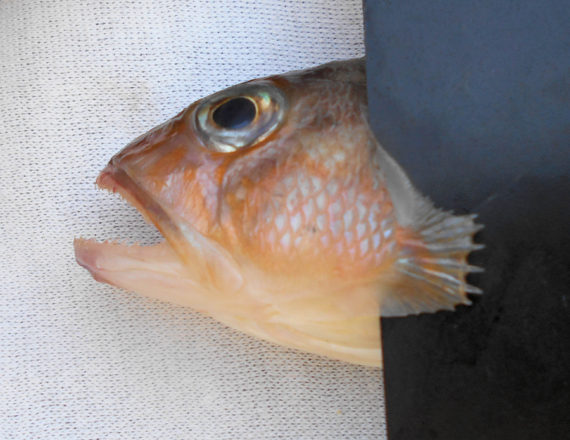
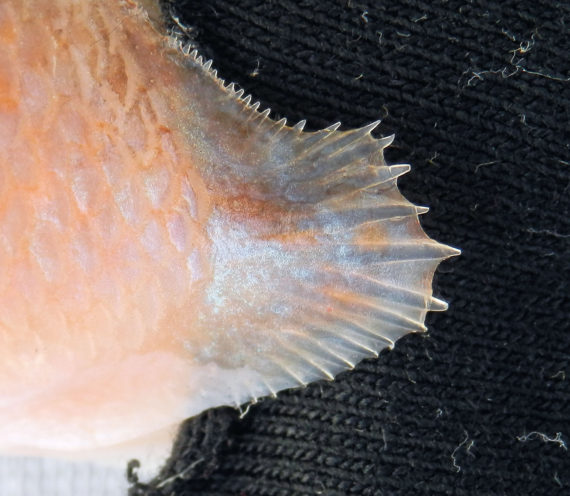 Pacific Sand Perch, Diplectrum pacificum: preoperculum.
Pacific Sand Perch, Diplectrum pacificum: preoperculum.
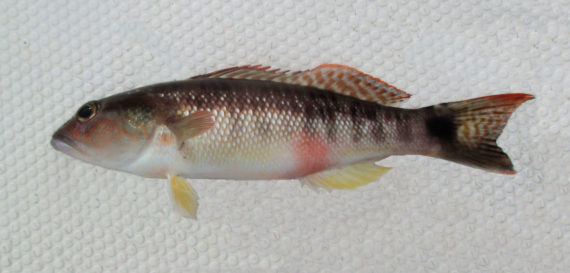 Pacific Sand Perch, Diplectrum pacificum. Fish caught from coastal waters off Mazatlán, Sinaloa, April 2018. Length: 18 cm (7.0 inches). Catch, photograph and identification courtesy of George Brinkman, Guelph, Ontario, Canada.
Pacific Sand Perch, Diplectrum pacificum. Fish caught from coastal waters off Mazatlán, Sinaloa, April 2018. Length: 18 cm (7.0 inches). Catch, photograph and identification courtesy of George Brinkman, Guelph, Ontario, Canada.
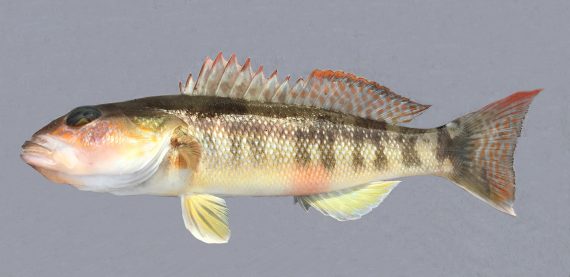 Pacific Sand Perch, Diplectrum pacificum. Fish caught off the dock with a cast net in Santo Domingo, Baja California Sur, December 2019. Length: 21 cm (8.3 inches). Catch courtesy of Ruben Duran, Puerto Adolfo Lopez Mateos, Baja California Sur. Photograph courtesy of Brad Murakami, Surrey, British Columbia, Canada.
Pacific Sand Perch, Diplectrum pacificum. Fish caught off the dock with a cast net in Santo Domingo, Baja California Sur, December 2019. Length: 21 cm (8.3 inches). Catch courtesy of Ruben Duran, Puerto Adolfo Lopez Mateos, Baja California Sur. Photograph courtesy of Brad Murakami, Surrey, British Columbia, Canada.
The Pacific Sand Perch, Diplectrum pacificum, is a member of the Sea Bass or Serranidae Family, and is also known as the Inshore Sand Perch, being found in relatively shallow water when compared to the other sand perches, and in Mexico as serrano cabaicucho. Globally, there are twelve species in the genus Diplectrum, of which ten are found in Mexican waters, two in the Atlantic and eight in the Pacific Ocean.
The Pacific Sand Perch has an long slender body with an overall tan coloration, a white belly, and a head covered with orange spots. Their head has a narrow bony cheek spur (preoperculum) with 5 to 8 long spines (pictured above); the shape of their preoperculum is a key to identification. They have a series of 9 dark bars along the lower half of their body. Their caudal fin has 5 rows of spots; the top border is red and the lower border is white. Their dorsal fins have 2 rows of spots. Adults have a large pink blotch on their abdomen above and just in front of their anus, a large purple spot on their gill covers, and a black spot at the base of their tail. They have yellow anal and pelvic fins.
The Pacific Sand Perch is found over sandy bottoms at depths up to 122 m (400 feet). They reach a maximum length of 28 cm (11 inches), as documented by a fish that I caught. The Pacific Sand Perch are synchronously hermaphroditic possessing both males and female organs and capable of producing eggs and sperm at the same time. They spawn in deep water as mating pairs. Their eggs and larvae are pelagic and move to shallower waters as they mature. The Pacific Sand Perch is small in stature and rare, and is poorly studied with very limited information available about their lifestyle and behavioral patterns including specific details on age, growth, longevity, movement patterns, diet, habitat use, and reproduction.
The Pacific Sand Perch is a resident of all Mexican waters of the Pacific Ocean with the exception that they are absent from Magdalena Bay, Baja California Sur, northward along the central and northwest coasts of Baja.
The Pacific Sand Perch is difficult to correctly identify because there are 8 very similar Sand Perches, all of the Diplectrum Genus, living in Mexican waters of the Pacific Ocean. The key to a correct identification is the unique shape of the preoperculum. See Sand Perch Preoperculum for an interesting side-by-side look at some fish anatomy of seven very similar looking fishes of the Diplectrum Genus found in the Pacific Ocean.
From a conservation perspective the Pacific Sand Perch is currently considered to be of Least Concern with stable widely distributed populations. The Pacific Sand Perch is too small and too rare to be of interest to most.